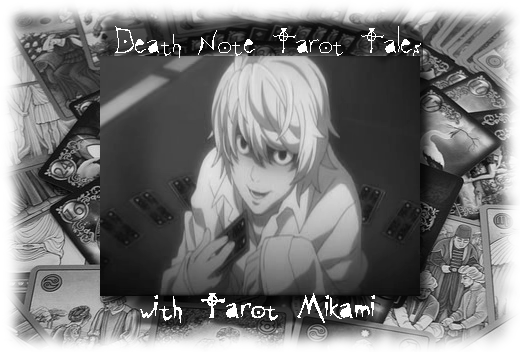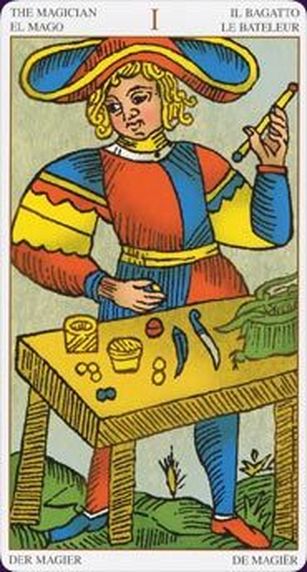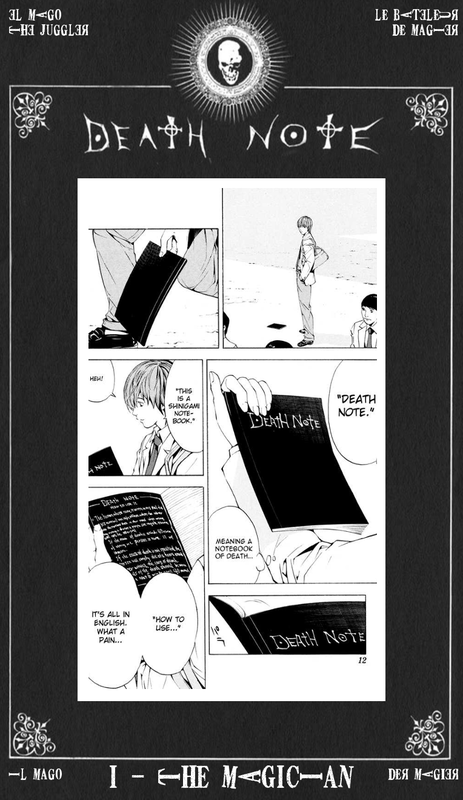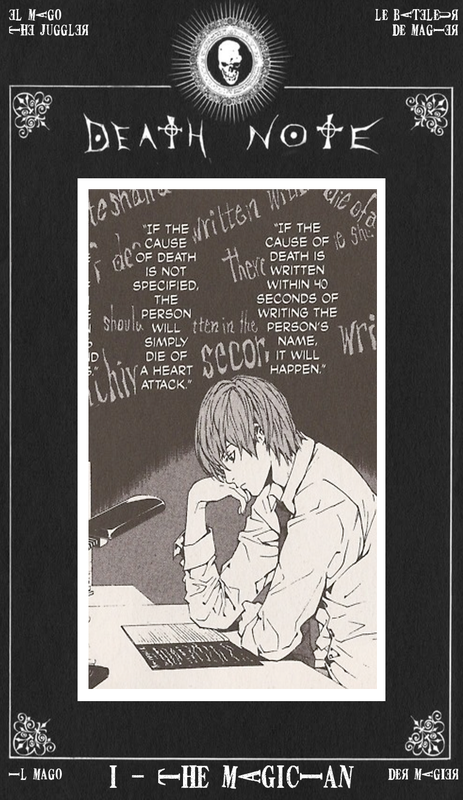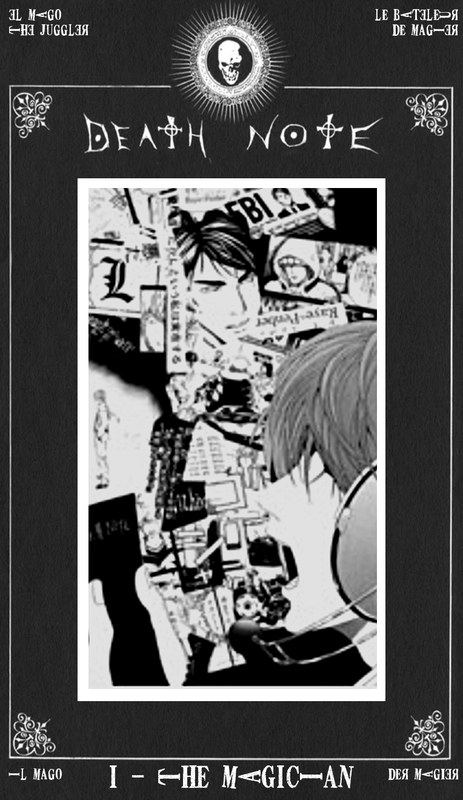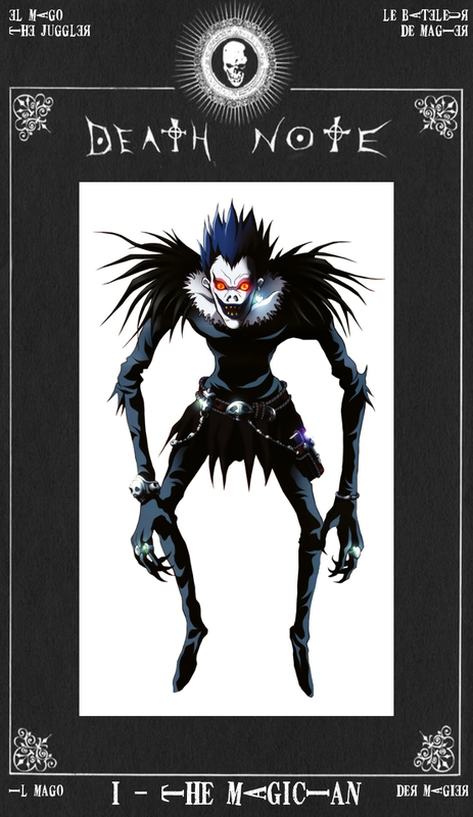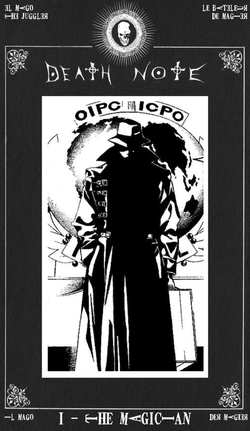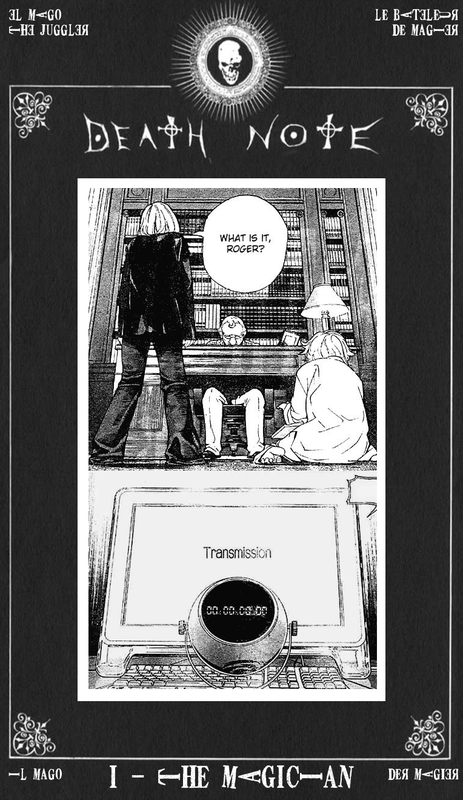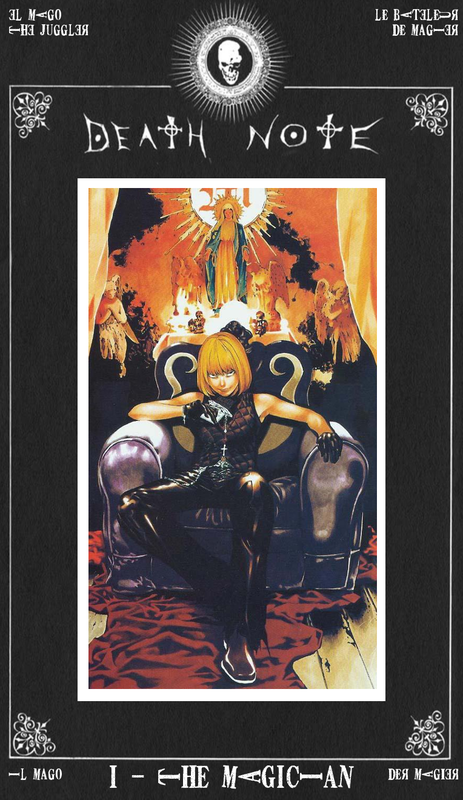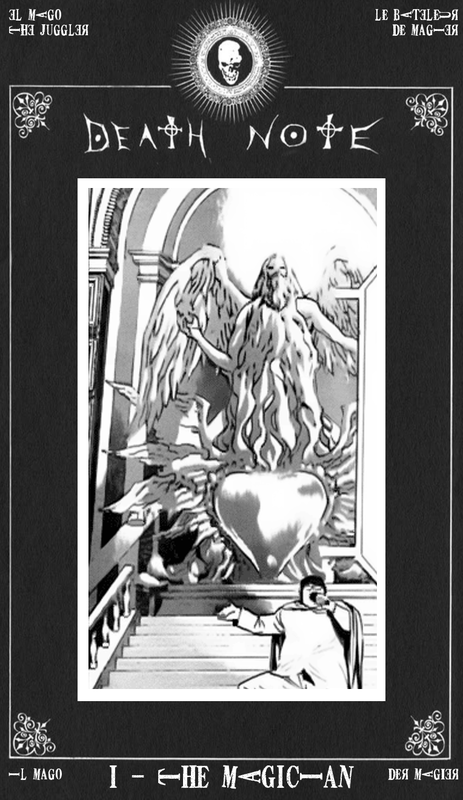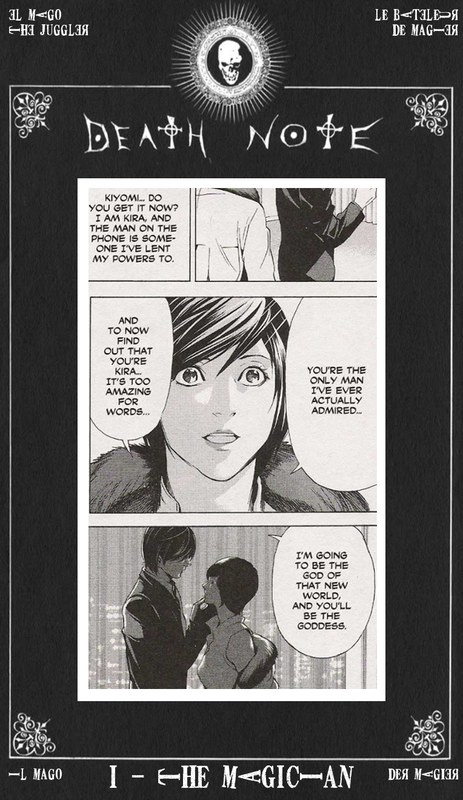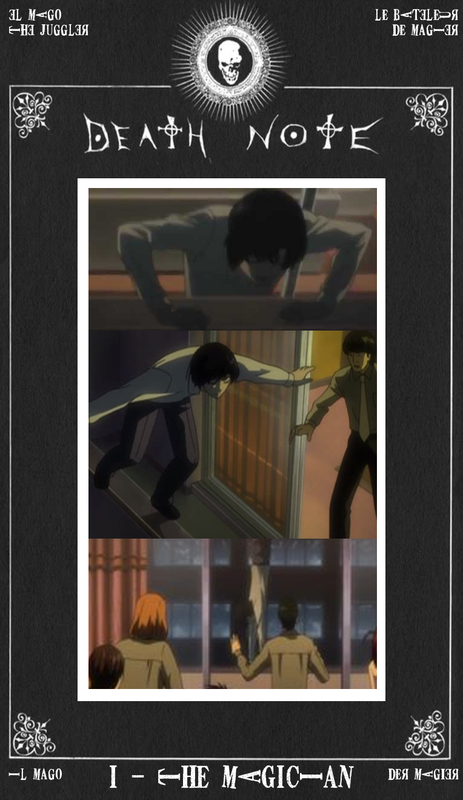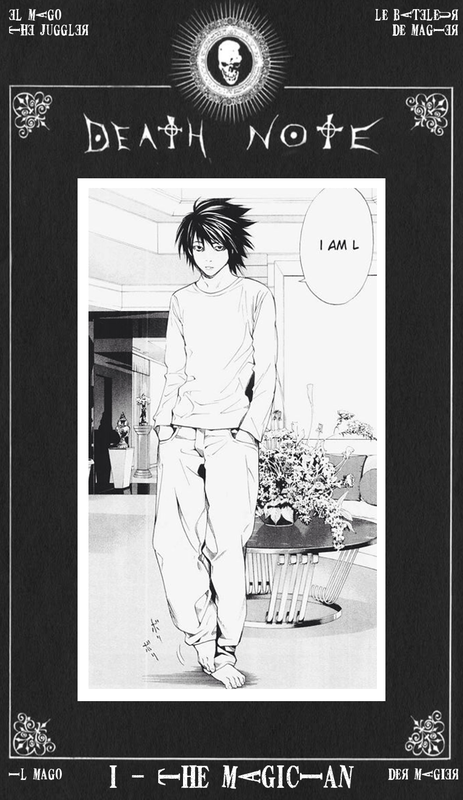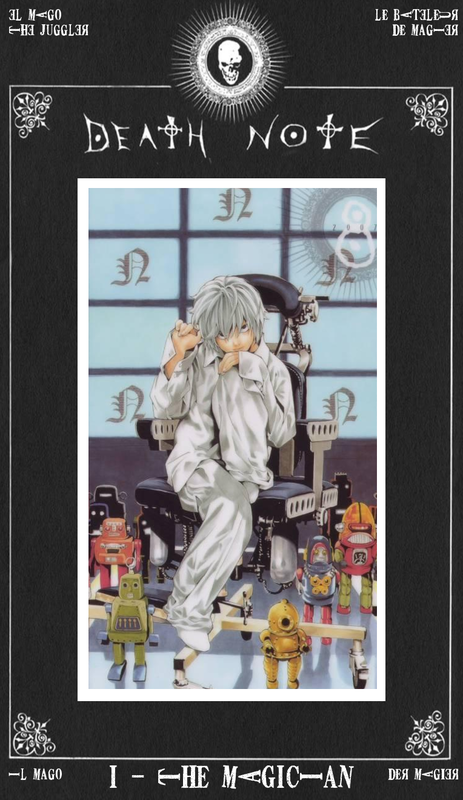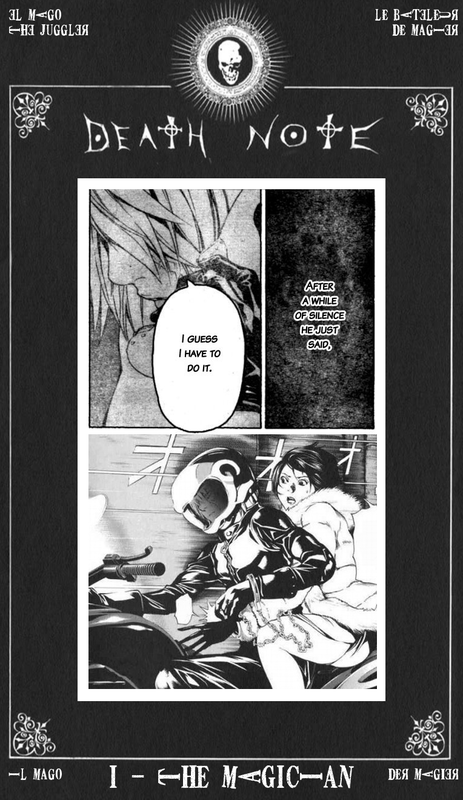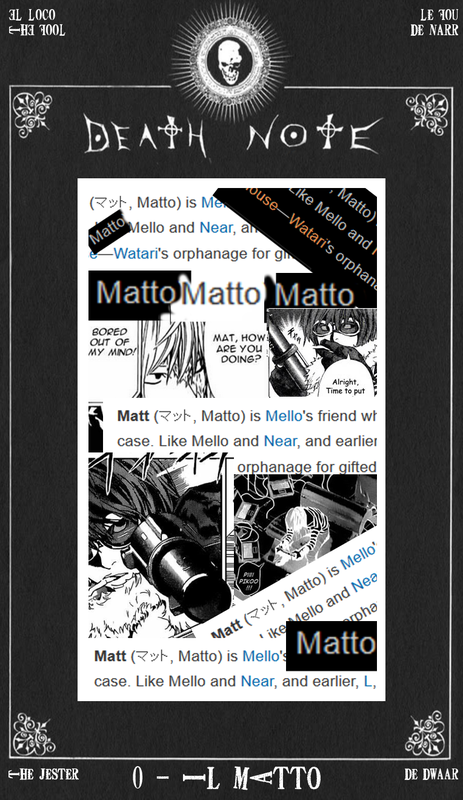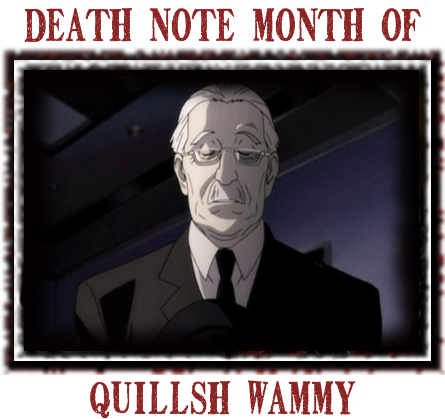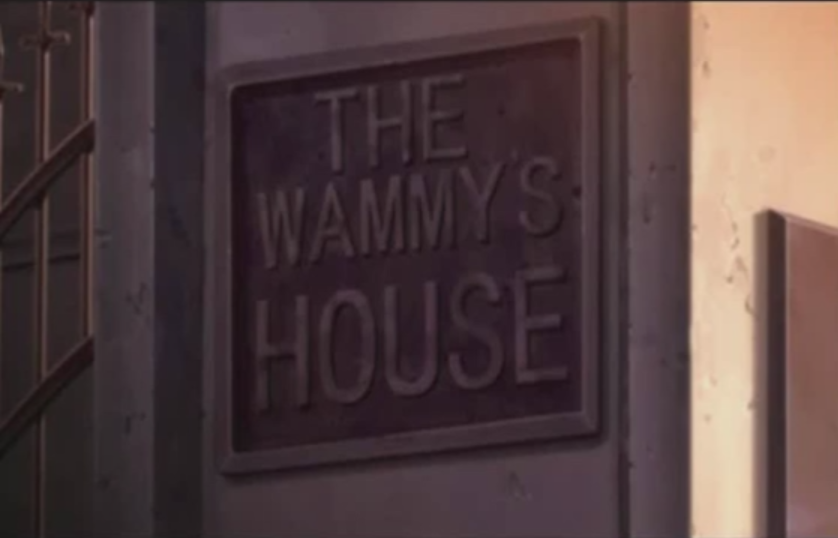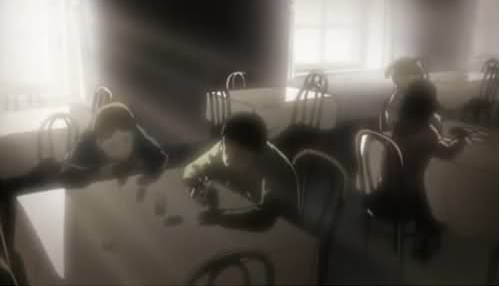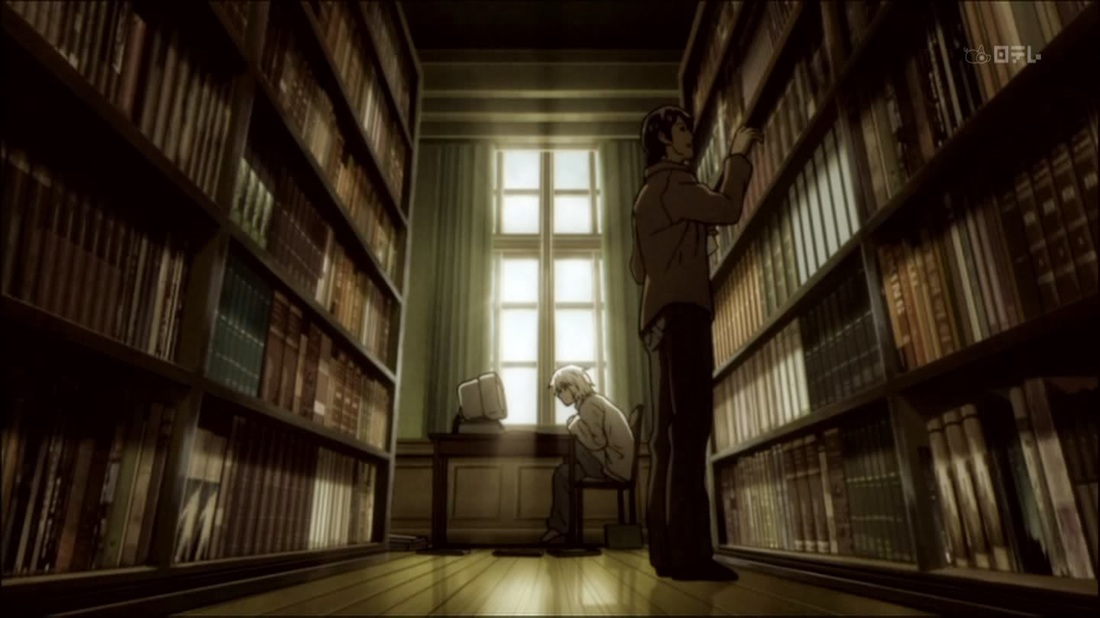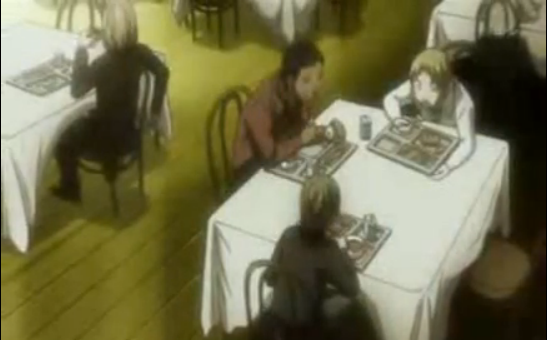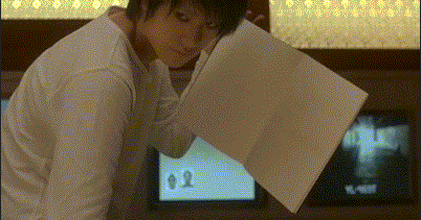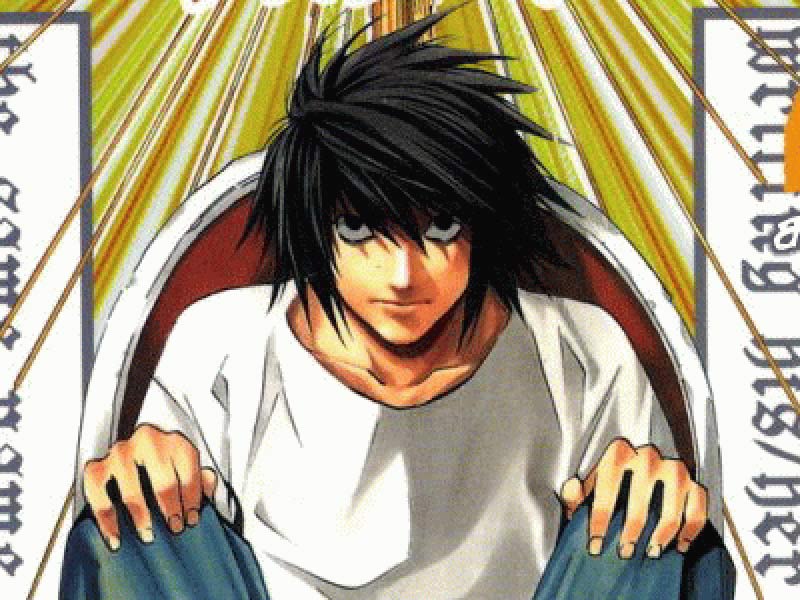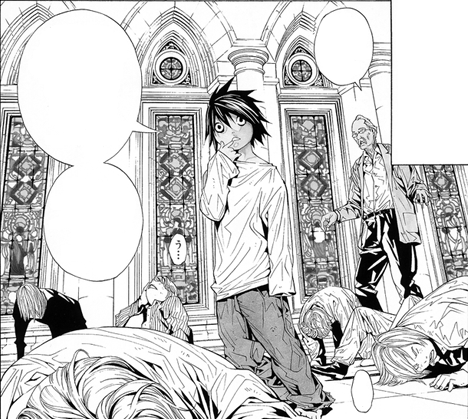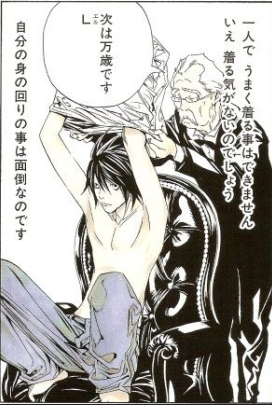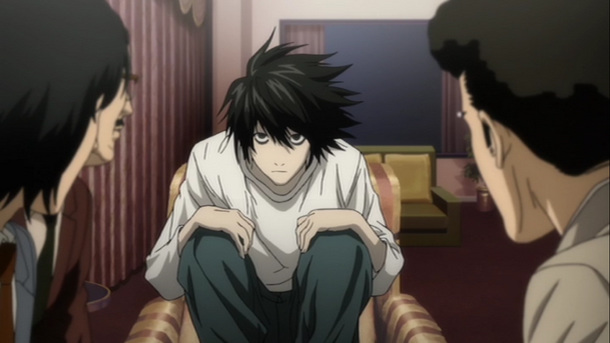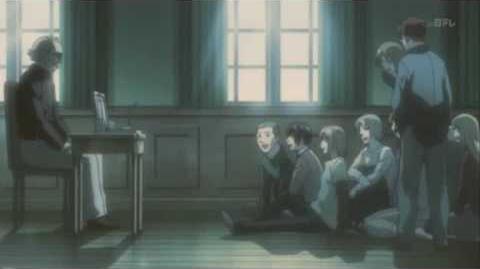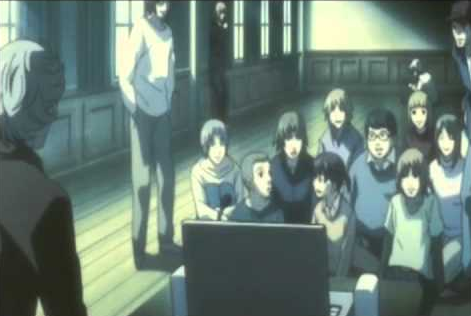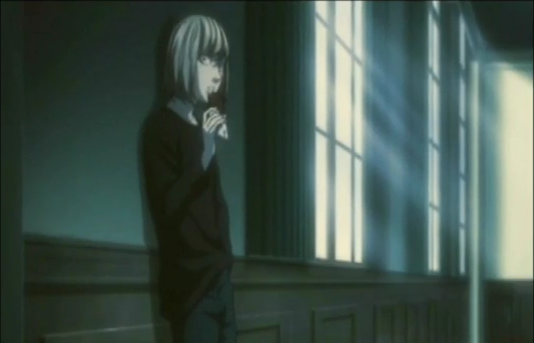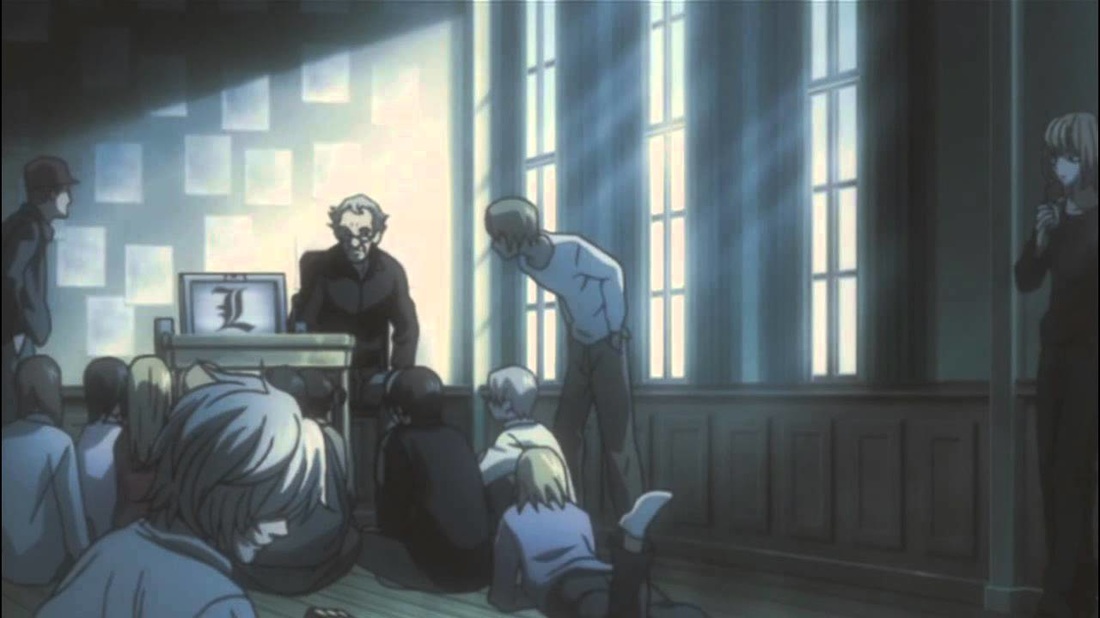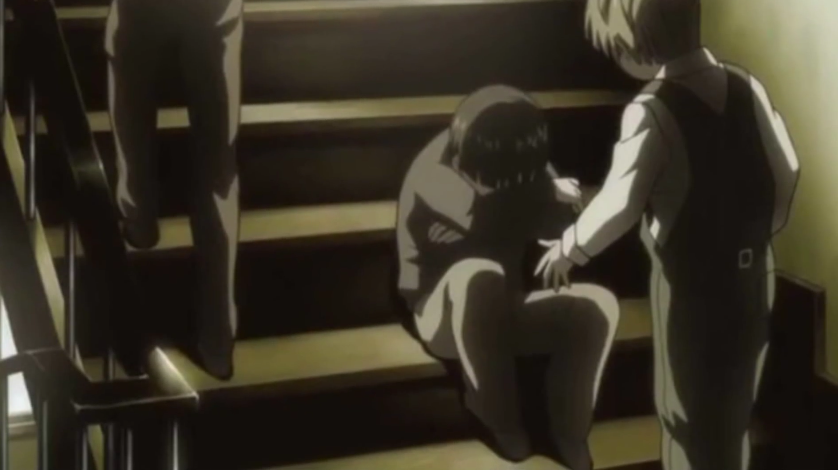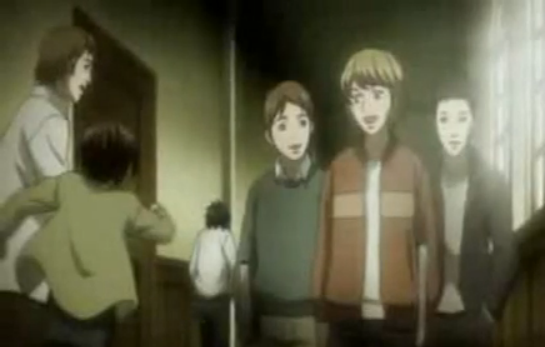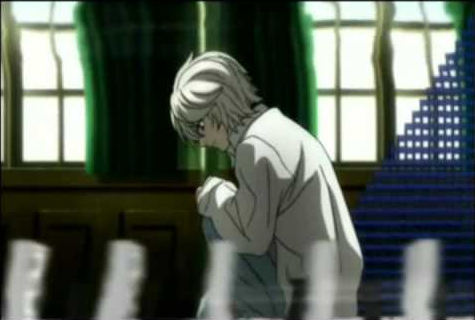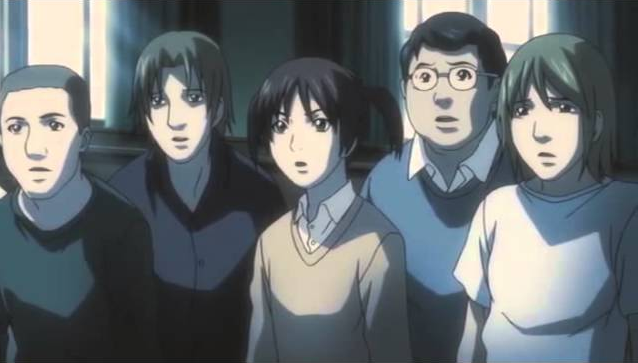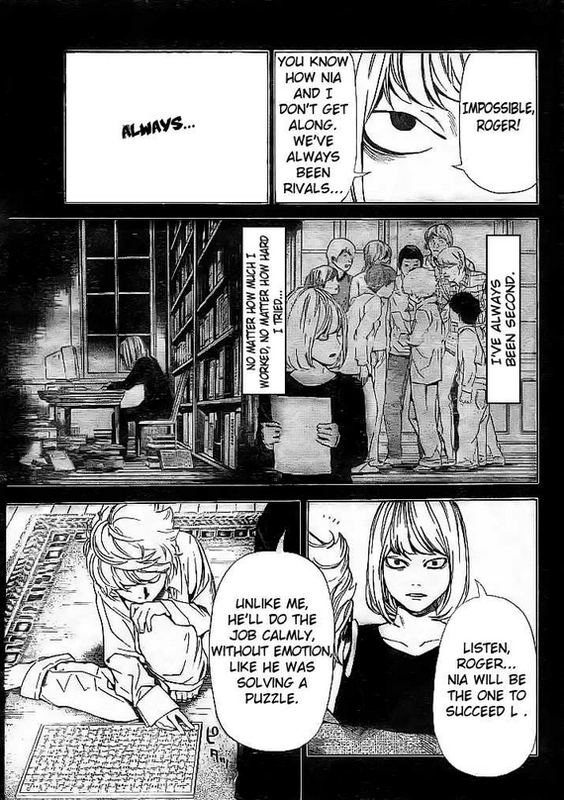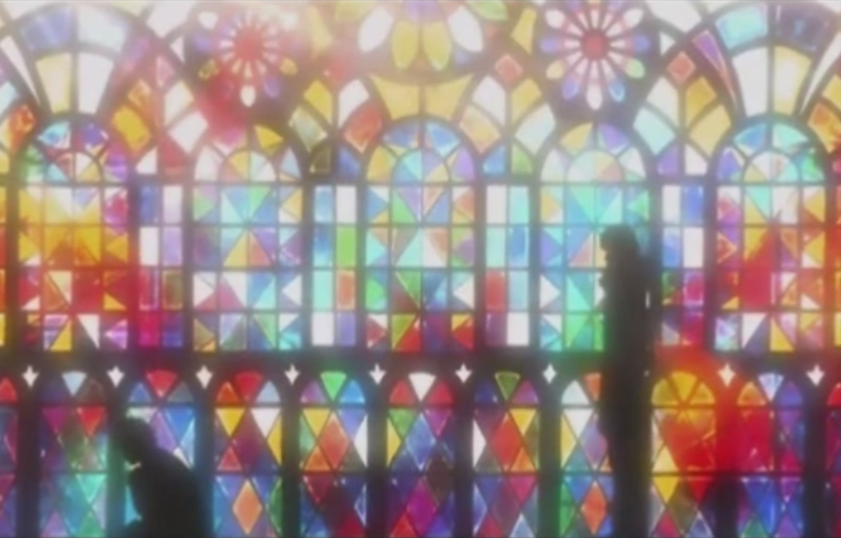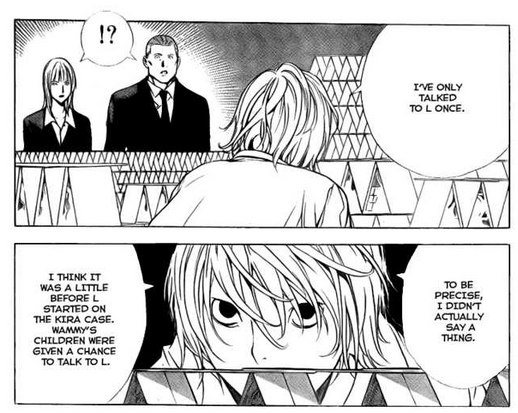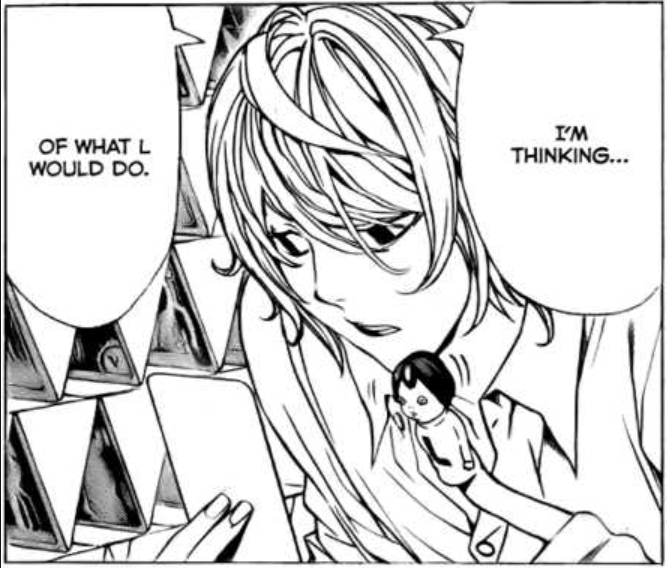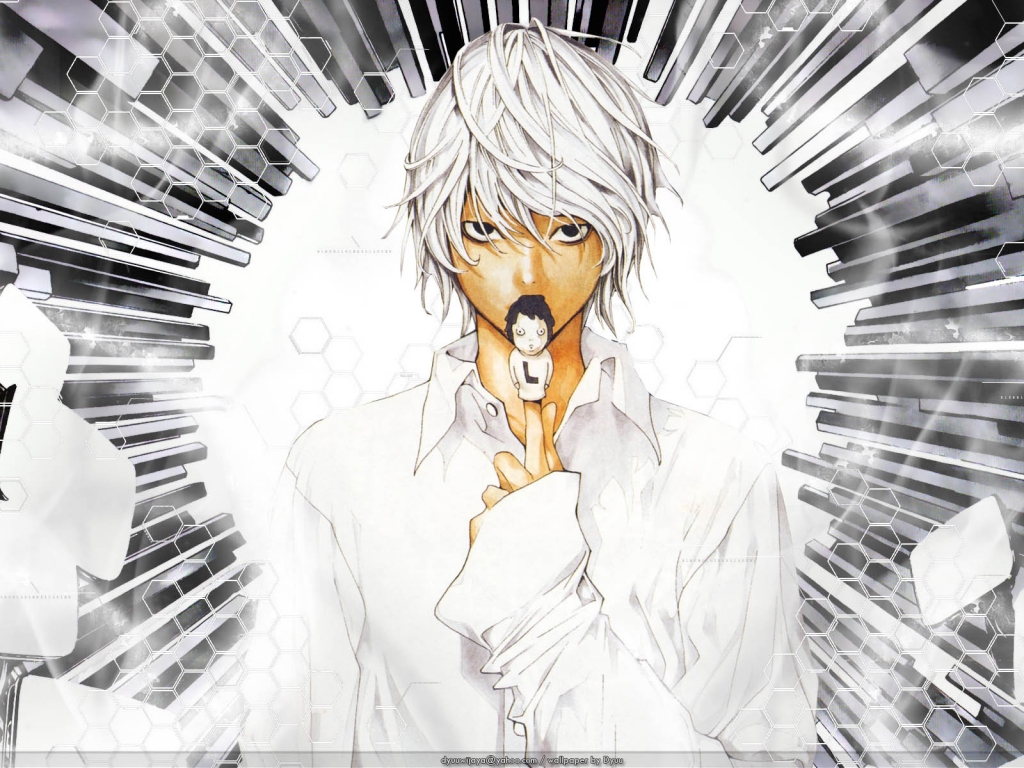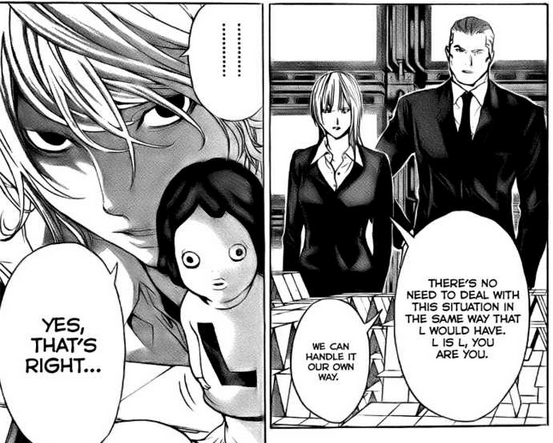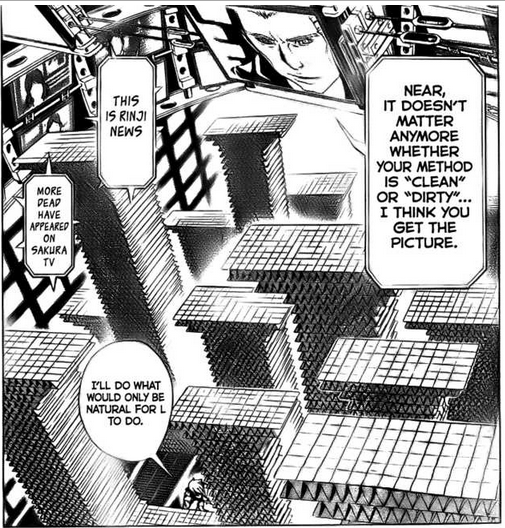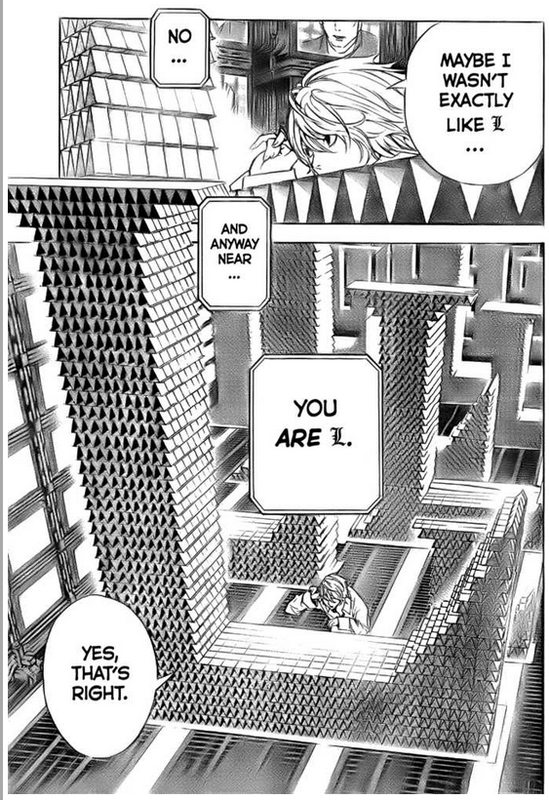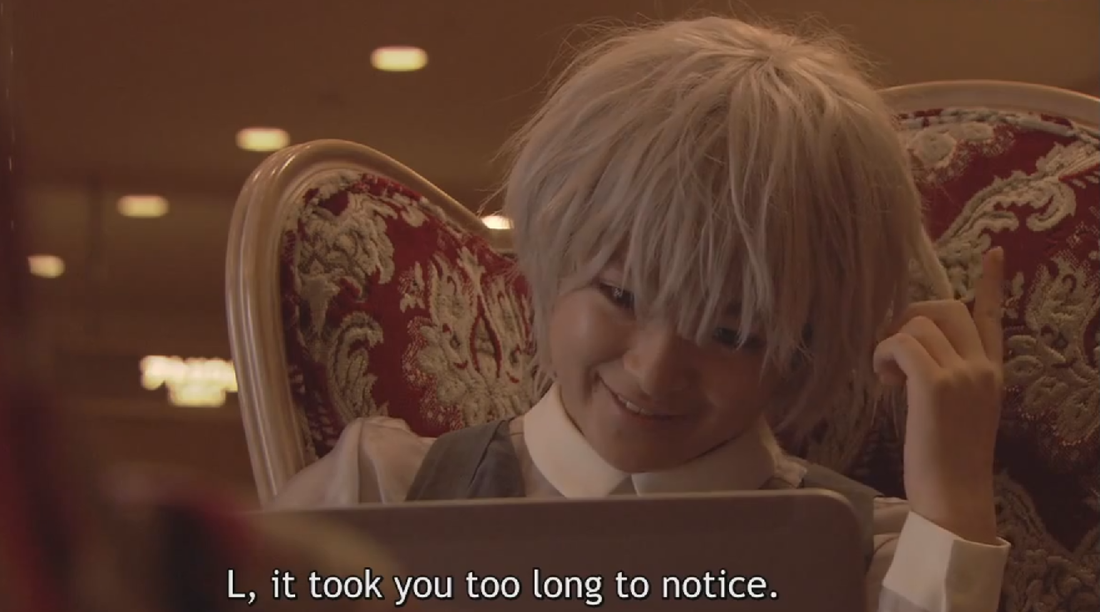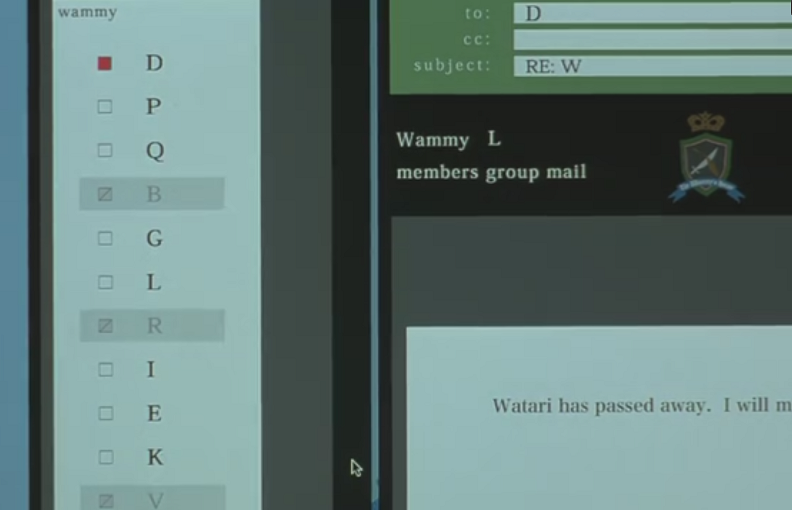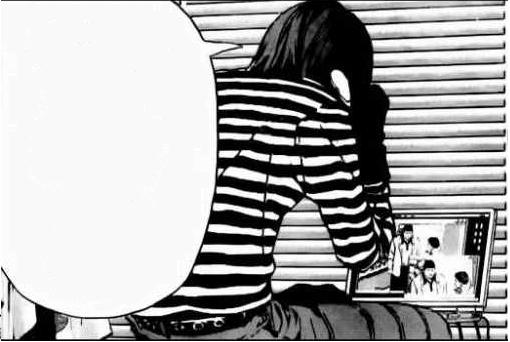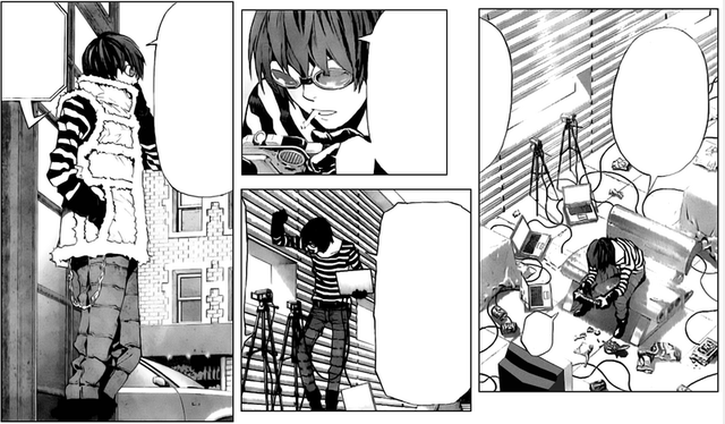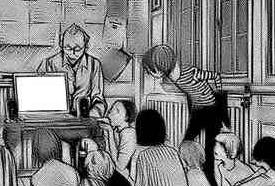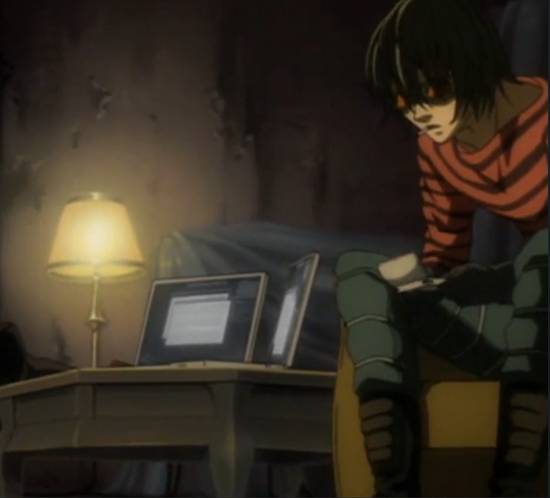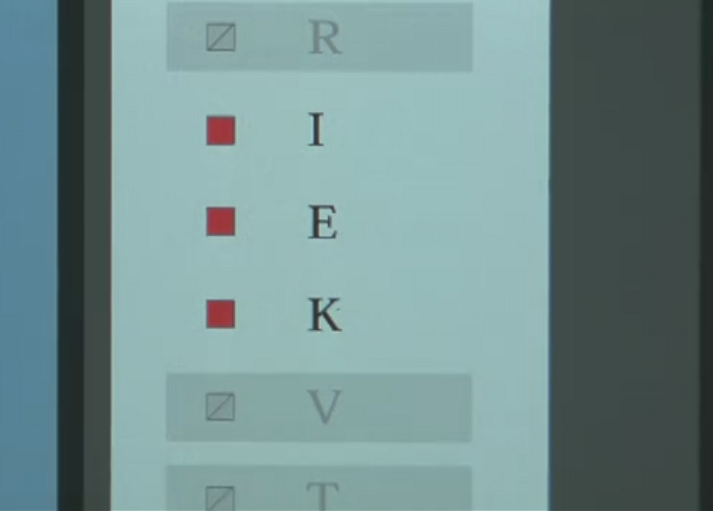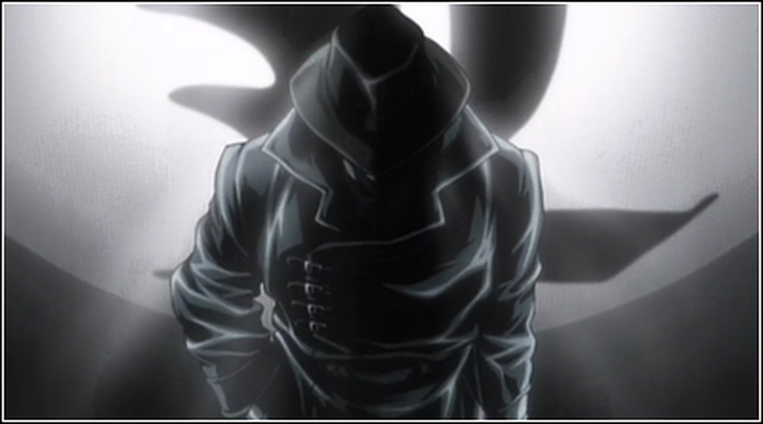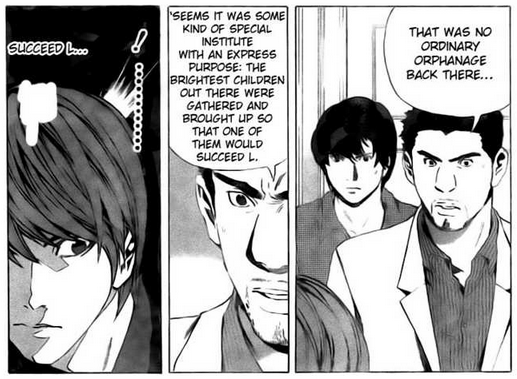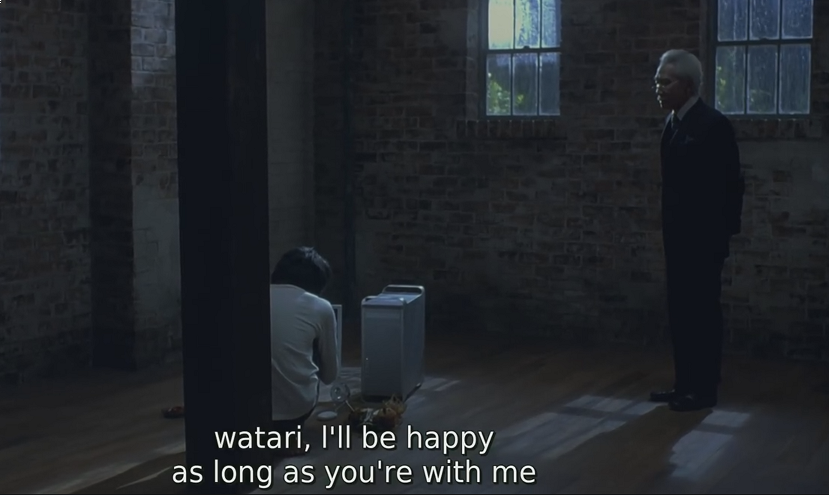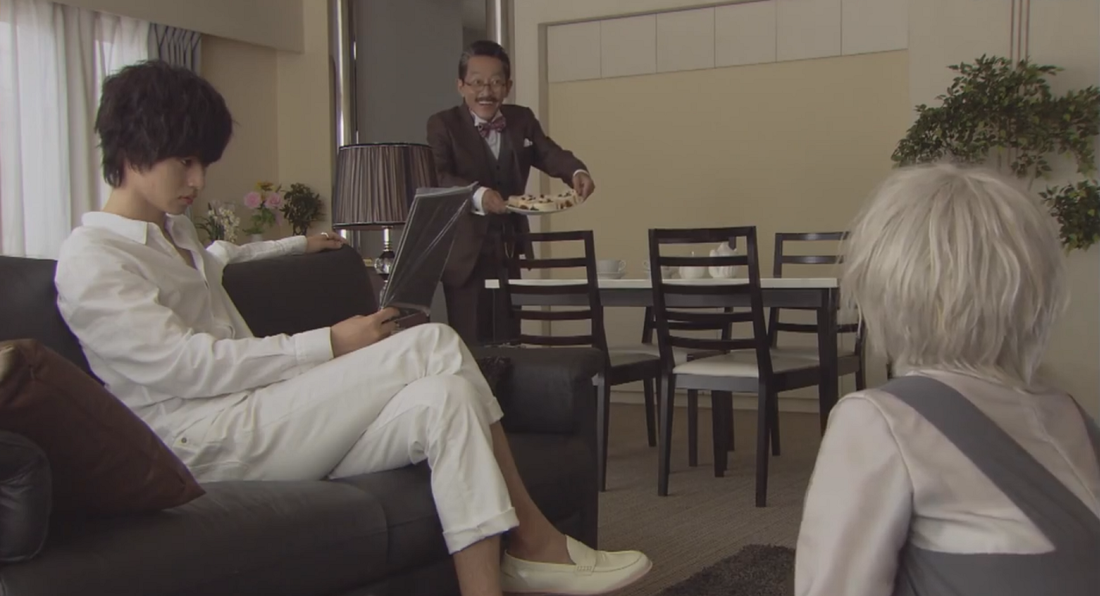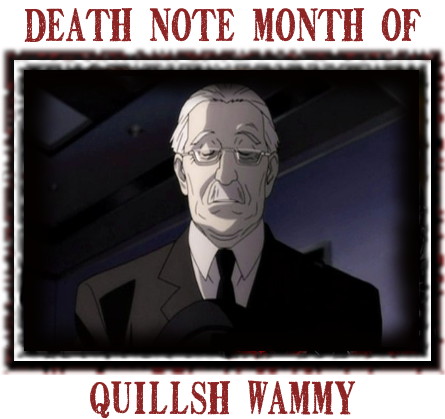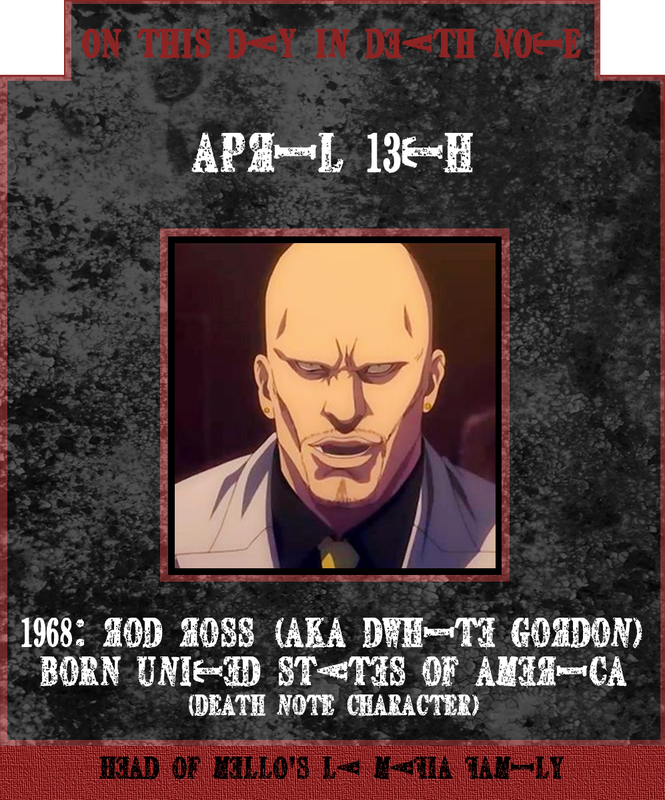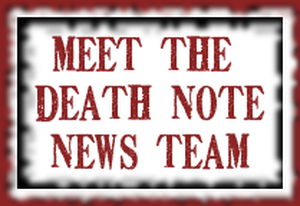| Every epic journey must begin with a step upon its routes, roads and Ryuk directed by-ways. Every great destiny must have a destination. Explored against the back-drop of Death Note, the Major Arcana Tarot cards feature the realm of The Magician ~ written by our guide into all things esoteric Tarot Mikami |
It's not unknown.
But no matter what foolish idea inflames your passion and ignites your will. Before you take your first steps onto the path of making it real, you will need some guidance. Sound the intro, maestro! And enter The Magician.
The Many Roles of the Tarot Magician
| The second card of the Major Arcana starts the story proper. It stands at number one, as The Fool is zero. Without meeting or becoming The Magician, the Fool is merely a broiling mess of notions, running around like a headless chicken with no direction in which to pursue them. If nothing else, the Magician is a doorkeeper - providing access to another (or the wider) world, opening a gateway onto an appropriate path, or acting as a way-marker signing the route to take. Usually this role contextualizes the bigger picture and sets out the destination. The Wise Man is concerned with destiny. Though the advice should be taken indiscriminately. The Magician isn't necessarily on your side. The guidance given or the way forward illuminated might be a service provided in all innocence and altruism. Nevertheless, he/she has an agenda of their own and the knowledge to manipulate others too. They may play a dual role - making Mafia profits sky-rocket, whilst diverting its resources into capturing a Death Note - and could as easily be trickster instead of consigliere. Or a charlatan. This all-knowing being may present themselves as God, then turn out to merely be a man and a murderer at that. Worse still, a serial killer implicating you in the guise of the great detective L. But the differentiation isn't always that clear cut either. Nothing so black and white. The Magician juggles many roles, generally playing all the same time; multi-tasking meaning depending upon who is being addressed. One person's terrorist being another's freedom fighter and all that, while the manipulation might be to save yourself from yourself, or to aid a greater cause. Either way, The Magician will certainly give our hero something to ponder and a route (or twelve) to take next. There's the potential for destiny-laden adventure and opportunities lessons to be learned here, if only never to be that gullible again. |
The Meaning of Magician in the Major Arcana
| Christians are most familiar with The Magician as the Magi - Three Wise Men in modern versions of the Bible; twelve Pharisee priests in the closest we have to the original - who visited the newborn Christ with gifts. For everyone else, the name has largely denigrated to the level of sleight-of-hand illusionists and tricksters on stage, or grown fantastical in figures from stage or literature like Gandalf, Merlin and Obi-Wan Kenobi. It used to mean so much more. The hints of it permeate our lexicon. We glimpse their greatness in words sharing the same root, like magnate, mega, magnitude, magnus, magus and majesty. That last also containing a hint of their skill as spokespeople, mediators, lecturers, teachers and orators - 'gest', as in 'jester', 'gesticulate', 'gesture' and the 'gist' of a story. It comes from Middle English 'to recite a tale', originating in Latin 'geste' or 'gesta' 'to perform deeds; to act'. By the time it hit 13th century France, 'geste' meant to 'narrate an heroic tale'. Stories could (and often still do) command the will of a people. Which is why governments today are so keen to pressure the press into toeing the party line. In Medieval Italy and France, which is where our earliest extant tarot cards were made, the majesty of magicians led to them adjudicating in delicate matters, acting as counsellors or speaking on behalf of less learned individuals. The Magicians as magisters, in fact, or magistrates. That 'gist' sometimes turning into its other form of 'iurare' to bring us to jury, and conjurer; or 'joculate' as joker or juggler. Wise counsellor or trickster indeed. Furthermore, the French word grammairien referred to 'learned men; magicians', whose ability to know the power and perfect usage of words gave us 'grammar'. But akin to magician is also master, maestro, mahatma, maharaji, maharishi, yogi, guru, the one who knows. The Japanese would call them dai-sensai, or O-sensai, doshi, Rōshi, or know them as sifi. In addition to great wisdom and skill, The Magician brings into play the tools that the Fool might need t0 embark upon their journey. |
Over the centuries, their spiritual descendants have been known as the adepts in a variety of other fortune-telling, mind expanding, soul perfecting or perception enhancing skills. For example, those magnificent seekers delving into the Kabbalah/Cabala/Qabala as scholars, scryers, practitioners, occultists, alchemists, diviners, philosophers, Hermetic code-breakers and ceremonial magicians.
Enlightened beings who know The Way and what it might mean for you. But if it's shared - and done so entirely, selectively or else strewn with misinformation - and how that translates into relevancy for your own life's destiny, only a Fool can know in passing through the realm of the Magi.
The Magi In All Their Guises: Major Arcana Death Note's The Magician Card
Firstly Light has to find the shinigami's notebook, which serves the dual purpose of opening his eyes to the existence of a world beyond his own and highlighting its possibilities. Hitherto unconsidered (or disbelieved) realities are presented as a pathway upon which to forge his own destiny. It's the Tarot Magician as gatekeeper, signpost and luminary of higher knowledge.
However, its also the Trickster, or Charlatan, insofar as the falling Death Note serves Ryuk's agenda first and foremost. Its presence on Earth is set to alleviate the shinigami's boredom. Light will pick it up and, primarily believing it an elaborate prank, use it to the detriment of his own future. Not only will it curse his living years, but condemn his eternal being into the dissolution of Mu. This ultimate destination for Death Note users means that a destiny is foisted upon Light Yagami, manipulated by ignorance and curiosity into foolishly using it without fully translating all of the rules beforehand.
The Death Note wasn't on his side, nor against him. It's an item; a thing without judgement nor partiality. It serves an agenda encapsulated by itself. ('I am that I am' is the So'ham Sanskrit manta; also viewed as the Word of God in Christian mysticism; or 'As above, so below; so below, as above' in Hermetic teachings. All very much part of The Magician's inner knowledge, and here beautifully descriptive of the Death Note too.)
Secondly, Light actually reads the rules written inside the Death Note. Here the shinigami notebook becomes The Magician as a teacher; illuminating the arcane knowledge needed to utilize this supernatural tool. The rules themselves inspire possible ways in which Light may now traverse in order to fulfil his projected destiny.
Even more dramatically comes that third moment of the notebook of death as The Magician in Death Note. That's when the touch of it allows Light's mind to access his memories, previously locked away through rejection of the artefact. Perhaps it's not quite what the ancient Magos would view as accessing the higher self, but it serves the same purpose within the storyline. In an instant, Light Yagami's ignorance is dissolved, when the doors of perception are well and truly opened upon his past. His destination now reached, just as planned.
The Magician as Death Note's Gatekeepers and Arbiters of Destiny
| Ryuk is another obvious contender for The Magician's Death Note tarot representative. His appearance directs the plot in a myriad of ways, not least because it clarifies Light Yagami's overview and destiny. Just like his notebook, the shinigami confirms the existence of previously unknown layers to reality, broadening Light's horizons and information base. Ryuk stands as guide and gatekeeper to the shinigami realm. Not only can he speak for and translate the Gods, he is one. Whilst denying Light access to any such services, unless the whim of the moment takes him. Because he can. The shinigami also acts as arbiter of knowledge concerning eternity and deals available to human users of Death Notes, which he does deign to share. Albeit selective in his choice of snippets to pass on, and deliberately obtuse in the timing of all such communication. It's too amusing for him not to cause maximum frustration in thus trolling his human Death Note user. Which all fits in completely with the reason for him being there, performing his role as Earthly sage and sometime mentor. Openly not on anyone's side - but that of his own amusement - Ryuk is the Trickster Mage personified. His entire performance is dedicated to his own agenda, aligning with those of others only where each party's motives/tactics run in tandem. Or he's persuaded that the potential for entertainment is strong. The Death God is, after all, quite bored and he's here to alleviate said tedium. Everything that occurs must factor that in first, as top priority, because it's certainly the only reason Ryuk is acting in any capacity right now. |
L's Messenger Mage Watari: Herald, Spokesperson and Point of Contact
Destiny's Magister: Roger Ruvie, The Wammy House Ringmaster Tolls Part Two
| One day, Wammy House warden Roger Ruvie will be Watari too. His role will encapsulate The Magician in just the same way as Quillsh Wammy, as described above. Nevertheless, in that Fateful moment imaged as tarot arcana (left), Roger already illustrates several aspects of The Magican card. Each face or facet exhibited simultaneously. For a start, he's a messenger, delivering the news that the children's idol and surrogate father are both dead. Divining correctly the information received from a transmission's ending. Liaison, wisdom, enlightenment, all wrapped up in that single act. He's doing so as Wammy's House administrator - which has its root in 'ministry/minister' and from there becomes entrenched in symbolism linked with The Magician. Minister meaning to 'act on behalf of a higher authority', hence a minister of the state in politics or the church (it literally meant 'priest' in Medieval Latin). It gets its secretarial sense from the French, where it became 'servant; overseer; watcher; manager'. But may also relate to inspiration of a more tuneful note, hence minstrel and musician are both cognitive words. Each obviously pertaining to The Fool, yet The Magician too, as the latter can be former in receipt of self-awareness, context or knowledge, thus driving their own actions. It all becomes much more blatant, when another cognate is brought into the mix - magistrate or magister. One who directs or adjudicates; making decisions; laying down the law. Roger is authorized to tell a twelve and fourteen year old that their idolized foster sibling and beloved guardian are dead. Yet nothing of sentimentality here. His job is to collect children from around the world, bring them to The Wammy House and train them as potential successors to L. His results are majestic. After coldly dismissing Mello's emotional outburst, the first question asked was which of them was chosen as heir. No querying the fact that kids are about to be sent into an arena which killed two adults, one purportedly the world's most genius detective. No options considered. This Wammy Ringmaster magisterially sends both kids to fight round two; their destination seeming less destined than Fated, with such news extolled like passing bells, louder than ever tonight. |
Mello the Consigliere: Death Note Mafia Mage with a Dual Agenda
| Mello exemplifies The Magician with a dual agenda, while acting as consigliere within the Mafia family headed by Rod Ross. It's similar to the previously examined outlook of that other magnate Ryuk, but Mello's motivational duality holds some important differences. The Magician acts by manipulating an individual's lack of essential knowledge or wisdom. However this doesn't necessary occur every time, only when it suits our canny counsellor's alternate agenda to do so. Sometimes the concerns will align for both advisor and their directed individual; sometimes not. Regardless, the interests of the latter do not factor into the guidance given by this Mage - whether in counsellor mode, or as councillor representing their client's views and speech to others. Consigliere (or consigliori) - Mello's position in the Mafia - meant both by the way. Though technically describing solely the counsel given to the Don, consiglieri (in manga and in life) also fulfil many other roles ruled by The Magician. Including, but not limited to, mediating in conflict; liaising on the Don's behalf with important contacts and/or authority figures (judges, police etc.); and keeper/archivist of secrets for the entire Family's, so to retain an overview and warn if trouble may be caused, for example, by a capo acting rashly through ignorance of matters concerning another. Mello seems to be a good consigliere. At one point Rod Ross is moved to comment that the genius teen has never been wrong in any decision made since joining their Family. However, no-one should lose sight of reality. Mello was just using the Mafia to achieve his own goals. The wisdom imparted by Mello as consigliere causes Rod Ross's profits to sky-rocket. Yet those and all other available resources are soon diverted into serving Mello's ambition to secure a Death Note. After Mello achieves his goal, thus placing a shinigami notebook in the hands of his Mafia family, all agendas probably fell in line, shared and indivisible. For a moment, indeed it seemed to Ross et al that they had absolute power. And then, in the next moment, they ended up dead. Mello using the lives of the last ones standing to make good his own escape. |
Sakura TV as the Charlatan: Showmanship Masquerading as Wisdom
| When Sakura TV appoints itself as the voice of Kira, it's an attempt to appear as The Divinely Ordained or Enlightened Magician. As studio boss and anchor-man, Demegawa's overall aim is to trick unsuspecting individuals into believing the station has some conferred higher knowledge. Therefore attempting to gain the same trust or power given to The Magician. Or in this case, boost ratings. The Magician can well act as spokesperson for the people/individuals in dealings with authority, or magistrate dilemmas and/or direct juries. They can certainly translate the divine for those less versed in the sacred mysteries. However, its beholden upon us all to beware false prophets. In its more negative (or domineering/pompous) aspect, our spokesperson Mage might not say what we wished them to convey. Think politicians declaiming sentiments which make us cringe or cry, all in our name; or the journalist who twists your words, yet 'quotes' you all the same, in pursuit of a sensational story bearing no relation to what actually occurs; or the parent/guardian/teacher expressing their own views as if they were automatically shared by yourself, ignoring or over-riding any attempt at dissent. While Kira may experience Sakura TV's antics (in the persona of Demegawa) as the above, every other viewer is watching a charlatan or mountebank in action. A pseudo-priest or trickster mantis preying upon the gullibility of their television audience turned congregation. On the flip side, even the False Magician may inadvertently act as teacher. The lesson today from Sakura being not to believe everything you hear on TV. (Particularly when tabled as a Trump; donkey imagery warns us off, as seen below The Magician's board in some ancient tarot decks. Mistake the babbling showmanship of this charlatan for wisdom, and your only sure destiny is to be made feel like an ass.) |
Kiyomi Takada: Enlightened Divine Messenger of Death Note
| I don't remember who said it, but the quotation snagged in my mind. Someone was told that David Icke - the footballer turned commentator and write - was now telling all and sundry that he was the Son of God. There was a pause in which the informant gleefully awaited the witty put-down that was sure to follow concerning the subject of their gossip. "Well?" The other slowly asked. "Has anyone checked if he is?" And therein lies the rub. How does one verify such a claim? And if we can't, then how do we know for sure whether they're a mounteback babbling lies, or insane, or someone Cassandra cursed to be disbelieved in all the divine truth they tell? The Magi would know. It tends to be them. Whether reading the portents in divination; searching arcane knowledge to uncover higher truths; or acting as intermediaries between the Gods and us, as the priestly caste or ministering on career paths. Just occasionally, we get the real thing. Magos aglow with the numen nod - enchanters, prophets, seers, the chosen and invokers; attuned to the Great Music and entrancing with utterances lifted from source; merely mediums through which the universe flows. Or television anchor woman/newscaster, who just happens to be the right person, at the right time, with a matching warped sense of morality and all the right contacts to be the Messiah. The divine intermediary aspect of The Magician is represented quite literally by Death Note's Kiyomi Takada, twofold. She performs her role as Messenger of the God(s) in that Takada is the actual, publicly appointed spokesperson for Kira; while also being the conduit that allows both Kiras - Light Yagami and Teru Mikami - to communicate in open conversation. No charlatan this. Blessed Takada performs with gravitas; notably refined before this even began. Now perceived by the ever-growing faithful as gentle, radiant, the real thing and absolutely full of grace. Buying into and believing all Light says; mind mired and amazed beyond all rationality. But then it was always thus: |
Those the Gods will destroy, they first make mad; and whom the Gods love dies young.
Le Bateleur Matsuda: Sleight of Hand Illusionist in Death Note
| Le Bateleur is the aspect of The Magician most familiar to us in the modern world; give or take a few fantasy movie mages, and their counterpart skills offered as an option for gamers. This is the stage magician; the conjurer; the sleight-of-hand trickster; the illusionist; the abracadabra, now you see it, now you don't, bateleur drawing in crowds and thrilling them with misdirection, misinformation, smoke and mirrors distraction, before delivering all enrapt and gasping with awe to that climatic moment of The Prestige. Le Bateleur - and its cognates Il Bagatto, El Bagatella, Bateleuse - refers to this tarot figure's stick, rod or, ta-daaaa, wand. This aspect of The Magician appears throughout the Death Note series. There's even a whole chapter, in Death Note 13: How to Read, devoted to explaining all of the tricks inserted into the storyline by Tsugumi Ohba. The Death Note Magician tarot card we've chosen to depict Il Bagatto in action features Matsuda faking his own death. Before a stunned crowd of Yotsuba corporate executives, he pulls off The Prestige in garnering their belief that the dressed up Aiber far below on the ground is Matsuda's mangled corpse. Meanwhile, Touta sits safely on a mattress a mere one floor below. However, we could just as easily picked any of the dozens of scenarios, whereby Death Note's conjurers wash over truth with a new reality, attested by witnesses swearing on oath that they watched throughout. Like when Light becomes aware he is being watched by surveillance cameras. He quickly acts to manipulate the evidence by a tricky sleight-of-hand illusion. To the onlooker, it would appear as though he was only studying, while taking those potato chips and eating them. The reality being that Kira was killing criminals with a piece of the Death Note hidden, alongside a miniature TV, inside the chip bag. Even L was fooled by that one. So what's your favourite showing for the tarot Death Note Bagatella? Just to check that you kept observing, through all there was to see. |
The Three Wise Men (Wam-Magi?)
When Takimura heard this, he was frightened and all world leaders with him; and calling together all the Kira Task Force and NPA public relations officers, he inquired of them when the Kira was to be arrested. They told him, "In the Yellow Box Warehouse; for so it has been written by Near: 'And you, Takimura, in the land of Japan, are by no means going to know a thing about it, because Mello would have got you killed by then.'"
Then US President David Hoope secretly called - via Watari - for the wise men and begged each in turn to stop threatening to control him into doing worse than Kira, whenever any of them get hold of a Death Note. Then he sent them to Kanto, saying, "Go and search diligently for Kira; and when you have found him, bring me word so that I may also go and pay him homage."
When they had heard the POTUS, they got him killed and replaced with George Sairas; and there, ahead of them, went the star Misa Amane that they had seen rising as Second Kira, until she stopped because L had her tortured. When they saw that the Japanese idol had started begging to have her life ended, they were overwhelmed with joy.
On entering the Warehouse, they saw the megalomaniac with Mikami his worshipper; and Near knelt down (the other two forced to too, as they were now dead and puppets). Then, opening their treasure chests, they offered him gifts of cake, Transformers, and chocolate.
And having painted a vivid picture for Ryuk warning of a future bound to a Death Note now stuck in Near's vault - while Light languished in a prison for the criminally insane for life - Near successfully manipulated the Death God into taking out Light before returning to the shinigami realm. Then the Three Wise Wammys left for their own country, where verily two returned to the toy box and Near took L's Code for himself. And probably Mello's too.
Bored out of his mind, Il Matto stayed put in Winchester, playing SuperMario and thanking the Gods of the Internet that Kira never came with cyber-terrorism on-line. Else he'd never have been able to get away with hiding behind his lazy, mad, wise Fool routine; playing Tetris instead of getting himself killed in someone else's war. So wise he only ever ranked third and remained forever Il Matto. He probably wouldn't have amounted to much anyway. Beep, beep, lulwut, nub?

